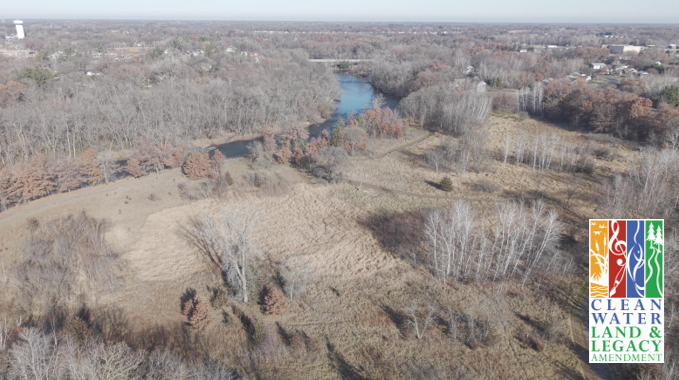Dellwood River Park offers ample opportunities to walk in nature, fish from the shore, or enjoy the view just outside of the City of St. Francis. In 2023, ACD installed bendway weirs to deflect erosive flow off the riverbank. These rock weirs protect the trees along the shore, improve water quality, and provide excellent fishing opportunities. Over the coming years, ACD and the City of St. Francis will work together to further enhance habitat in the park by managing invasive species and restoring native vegetation.
~7 acres of open space currently dominated by invasive smooth brome and reed canary will be restored to native prairie and ~10 acres of woodland will be managed for buckthorn to include a native understory. The habitat enhancement will be funded with grant dollars from the Outdoor Heritage Fund of the Clean Water, Land, and Legacy Amendment, as well as matching dollars and continued maintenance by the City. Stay tuned for continued updates!
For more information, contact Jared Wagner, Water Resource Specialist, at





